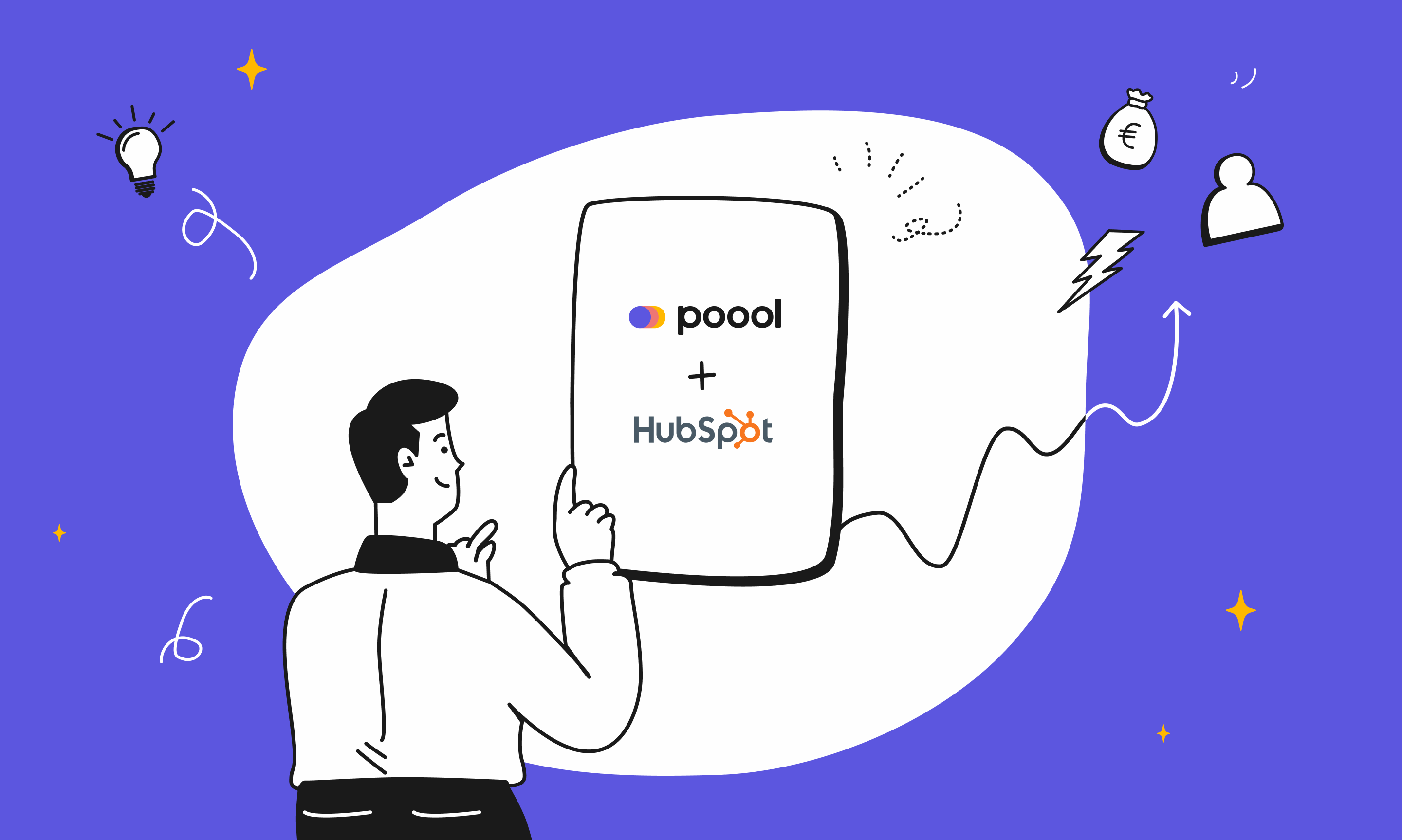Let’s set the scene… You’re a B2B company, and you work in marketing, comms, or pre-sales. For some time now, you've had an inbound content marketing strategy on your company blog or brand publishing site with the goal of acquiring prospects. You’re happy, it’s working pretty well.
You track your audience, visits, page views, etc., and performance seems to be improving over time. You have a decent amount of newsletter subscribers who come to you through the email boxes pasted across your site. If you divide the number of leads generated by the number of unique visitors, you’ll get a conversion rate of 1%, maybe reaching 3% in a few weeks. It’s good, but not great.
So, what if I told you that you could reach a conversion rate of up to 20%?
If you’ve read this far, it’s probably because you use Hubspot as your CRM. It stores your contact information, company deals and tracks their movement through the sales pipeline.
But what’s essential is the generation of these leads, constantly adding new contacts to the pipeline.
This article will explain how you can multiply the number of inbound leads by 10…
What you currently do: put signup links all over your site, and pray
You show a link "Subscribe to our newsletter" or post email collection boxes across your site, at the end of articles, in side columns, in the footer or directly in your header, asking visitors to "keep up to date with the news".
Basically, you take advantage of the traffic already on your content, cross your fingers and hope that your reader's eyes will land on the email collection box, that they will go as far as entering their email and clicking on "Sign up". One shot out of 100 works, and poof, the lead lands in your Hubspot CRM. Yay!
It can be better than this.
What you should start doing: ask your visitors to fill out a form before accessing your content
Do you provide quality content that is useful to your readers? Show it! Place your content behind dynamic forms and require your visitor to sign up to your newsletter (thus providing their data) to access content. Stop using vanity metrics like page views and bounce rate. Instead, count what matters for your business - i.e. real leads with a name, a first name and contact information.
To achieve this, you'll need to put a data wall on your content. The data wall leaves the beginning of the content open and hides the rest, asking for data in exchange for unlocking the article...
For example:
Whilst Hubspot will allow you to store and qualify these leads, you’ll of course need to build the wall, adapting form fields, design and texts to your brand… This is where Poool comes in, the solution trusted by more than 150 content producers worldwide, and the most widely-used paywall solution in France (source: The Publishers’ Tech Stack report 2022, Sciences Po University).
Let's see how you can set up a datawall with Poool...
Step 1: set up your datawall in the Poool dashboard
The first thing to do in Poool’s Dashboard is to create the form you want your visitors to fill in. You have 10 field types to choose from, easily integrated into your form in a single click:
- Text
- Multiline
- Data
- Multiple choice
- Checkbox
- Password
- Select
- Radio
- Credit card
Next, build your wall design(s). Use one of our design templates or build your own from scratch. Good news: you won’t be needing any designers or developers. A marketer can do everything autonomously in the Dashboard, no code needed.
And if you're up for building advanced appearances, check out the following 5 minute tutorials : part 1 & part 2.
Finally, determine the audience segments on which you want to apply this datawall, and set up your scenarios:
For example, on The Audiencers, we have set up a scenario that gives access to the first article for free (unblocked), but blocks the second article with a datawall, asking the user to fill out their information and sign up to the newsletter in exchange for access to content.
The graph below shows our wall success rate evolving over time:
This screenshot of the Dashboard’s analytics page shows that 30% of audiences have accessed an article for free (via the “invisible unlock” widget) and that our datawall’s submission rate is at 20%! Unheard of for an inbound marketing strategy!
Step 2: Connect Poool to Hubspot database
Now that your forms are ready to be displayed on your articles, it's time to connect Poool to Hubspot and send data directly to your CRM.
Good news: this happens in minutes using the Zapier connector, which can be pluged directly into Poool’s Dashboard.
On Zapier, it looks like this:
And if we break down each step, here's what happens in Poool’s form submission Trigger:
And here's what happens on Hubspot: creating a contact
Next, set up your workflows in Hubspot so that your leads arrive in the right list or pipeline:
Step 3: Set up dashboards in Hubspot to get a qualified view of the leads generated
On Hubspot, set up recurring tasks to qualify your leads. You'll then be able to clearly see the fruits of your labor.
First, in volume:
And then from a qualitative point of view, by differentiating your customers from your prospects. For example:

